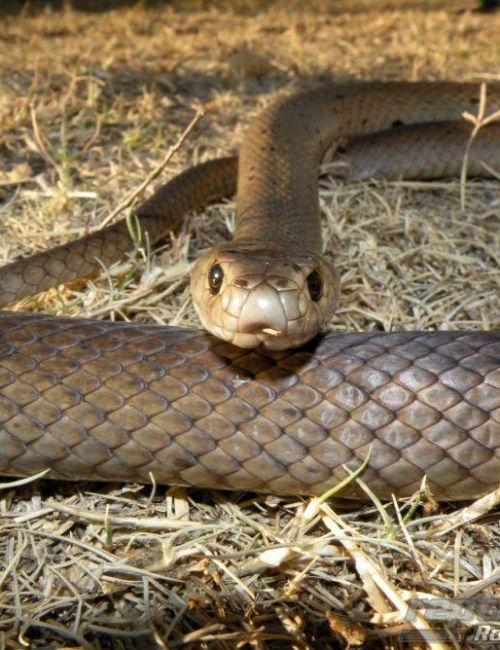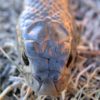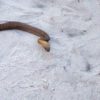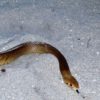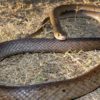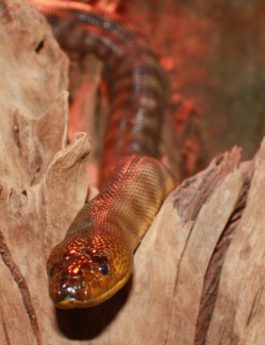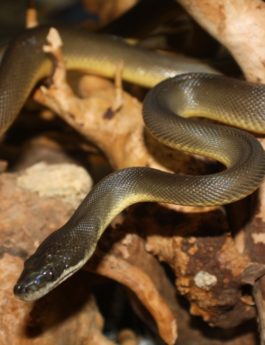Comprises 3 subspecies, including 2 dwarf island races. P. a. affinis (Günther, 1872) Large subspecies. Ground colour variable; yellowish-brown, pale or dark brown, grey to almost black. Many individuals bear scattered black scales. Heavily marked snakes from southern coastal areas are known as “Kabardas”. Juveniles bear a black head and nape, and dark flecks on body; forming herring-bone pattern. Ventral surfaces pale brown to greyish-white, blotched with orange to brown. Iris usually orange-brown. Midbody scales in 19 rows. TL 2.0m. P. a. tanneri (Worrell, 1961) differs from nominate race by smaller size and uniformly dark colouration (including ventral surfaces).
Shelters beneath logs, rocks or surface debris, and in abandoned burrows or hollow logs. P. a. affinis is widespread through south-western W.A. from Cervantes area, south-east to western SA. Occupies virtually all habitats, including coastal dunes, semiarid woodlands or shrublands, and wet sclerophyll forests. P. a. tanneri is known from some islands of Recherche Archipelago off southern coast of W.A. P. a. exilis occurs on Rottnest Island off Fremantle. This is vegetated with woodlands and heathlands over pale sands and limestones.
Terrarium: Dugites do not require an enclosure with very much height, however if given the correct environment with climbing enrichment they will explore their enclosure. The enclosure needs to be large enough to provide multiple hide rocks and maintain a thermal gradient, a terrarium that is 90x45x45cm (WxDxH) would be suitable to house a mature Dugite. Terrarium’s must be lockable and escape proof.
Lighting & heating: UVB lighting is not essential to Dugites, however a low 2.0 spectrum fluorescent globe can be used for viewing purposes. Heating can be provided with a heat tile, mat or cord to maintain a ground surface temperature of 32°C in the hot spot. Ambient heat can be provided with an infrared heat globe to maintain a daytime temperature of 34°C in the warm end and 25°C in the cool end, on warmer days you may not need to turn on the heat globe as the ambient temperature of the enclosure may already be high enough. A thermometer should always be used to monitor the temperature within the enclosure.
Furnishings: It is important to provide your Dugite with a hide cave in the warm end, a water bowl at the cool end, and artificial plants will give coverage and decoration. Large Logs and vines can be used within the enclosure to provide climbing enrichment. A pet bedding wood chips such as Chipsi or Critter Crumble can be used as a substrate. It is important to keep the enclosure basic and easy to maintain, as a cluttered terrarium can make it very dangerous when you need to remove your venomous snake from the enclosure for any reason.
Food in captivity: All snakes in captivity must be fed dead food. A Dugite will eat a variety of frozen and thawed mice, rats and chickens of appropriate sizes. On average they will have 1-2 food items every 7-10 days.
The essentials:
- Terrarium of appropriate size
- Tummy heating
- Thermometer
- Infrared Heat globe
- Water bowl
- Substrate
- Hide cave

